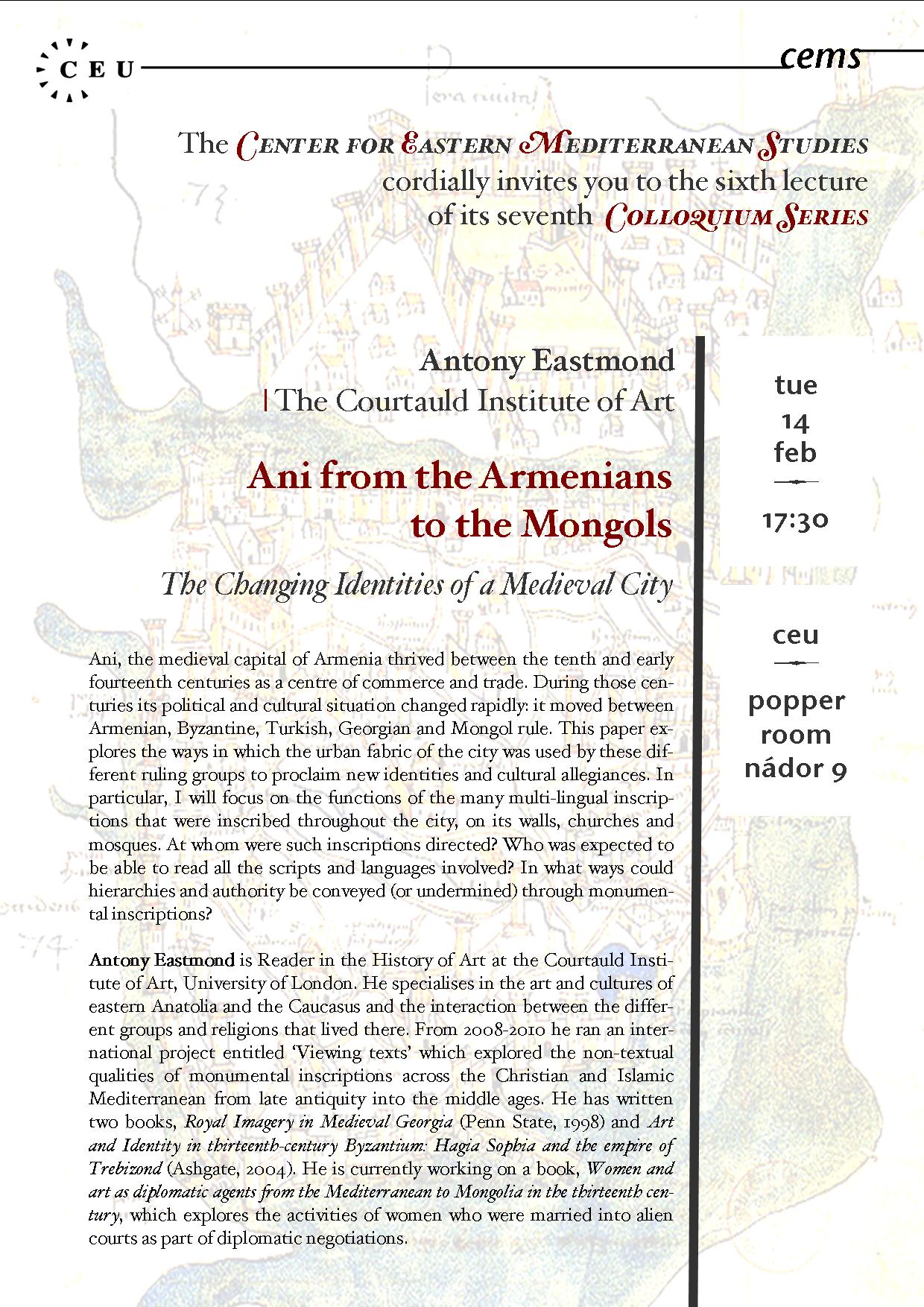Ani, the medieval capital of Armenia thrived between the tenth and early fourteenth centuries as a centre of commerce and trade. During those centuries its political and cultural situation changed rapidly: it moved between Armenian, Byzantine, Turkish, Georgian and Mongol rule. This paper explores the ways in which the urban fabric of the city was used by these different ruling groups to proclaim new identities and cultural allegiances. In particular, I will focus on the functions of the many multi-lingual inscriptions that were inscribed throughout the city, on its walls, churches and mosques. At whom were such inscriptions directed? Who was expected to be able to read all the scripts and languages involved? In what ways could hierarchies and authority be conveyed (or undermined) through monumental inscriptions?
Antony Eastmond is Reader in the History of Art at the Courtauld Institute of Art, University of London. He specialises in the art and cultures of eastern Anatolia and the Caucasus and the interaction between the different groups and religions that lived there. From 2008-2010 he ran an international project entitled ‘Viewing texts’ which explored the non-textual qualities of monumental inscriptions across the Christian and Islamic Mediterranean from late antiquity into the middle ages. He has written two books, Royal Imagery in Medieval Georgia (Penn State, 1998) and Art and Identity in thirteenth-century Byzantium: Hagia Sophia and the empire of Trebizond (Ashgate, 2004). He is currently working on a book, Women and art as diplomatic agents from the Mediterranean to Mongolia in the thirteenth century, which explores the activities of women who were married into alien courts as part of diplomatic negotiations.
